News
11 February 2019 - Podgorica will get another residential-business complex on the site of the current Hotel City under Ljubović, and the potential investor, Company UTIP Montenegro, does not reject the possibility that one part of the building could be left for a different hotel category than the existing one.
Hotel City is owned by the joint-stock company UTIP Montenegro, whose majority owner is businessman Žarko Burić. His "Normal Company" with 80,4 percent of the shares is running UTIP.
The demolition of the current City Hotel in Podgorica started February 11. The representative of UTIP Montenegro, Nemanja Nikolić, said that the destruction would take about 40 days. He added that they had already announced the construction of a multi-purpose residential and business facility.
UTIP Montenegro has previously announced that due to significant changes in the hotel market in Podgorica, which are primarily reflected in a significant drop in the price of the service due to the opening of a large number of hotels in the city and a bad situation in which Hotel City was generally in, investor JSC UTIP Montenegro made a decision on the construction of a multifunctional residential-business facility on the location of the Hotel City at the Assembly of Shareholders held on November 10, 2017.
According to the project that is being completed by the Podgorica architectural bureau, only the residential business building that would have a little less than 25,000 square meters is mapped to the place where the City Hotel today is located. Six floors, ground floor, and underground garage are projected.
"A multipurpose business residential building is planned on the plot. In addition to housing, the business segment is planned on the ground floor, and in one part of the building, the investors plan a construction of a city hotel that will have a separate entrance and which can be stretched vertically through the entire height of the building, "report the representatives of Detailed Urban Plan of Podgorica.
At Karanfil, one of the mountain massifs of Prokletije near Gusinje, not far from the valley Grebaje, there is a several thousand years old glacier, about which we know very little.
A famous hiker and guide to numerous expeditions that have been coming to the heart of the mountains in recent years from various meridians, Ahmet Rekovic, explains that the glacier is "far from the eyes and hands of anyone who could hurt him."
"This old glacier seems to be lonely there, located in Lower – Veliki Kotao. The snowman, as the mountaineers call it, is thousands of years old. This was confirmed by scientists who had been conquering him five decades ago, but with whose death as if the interest in recording and studying it from the professional side died as well," Rekovic told “Vijesti”.
According to him, as in the words of many other mountain lovers, the Gusinje glacier is located at the lowest altitude in the Balkans and perhaps even wider area.
"This glacier was formed at an altitude of only 1,600 meters. It's beautiful, there is no such beauty anywhere," says Rekovic. He explains that the glacier at the foot of the South Peak of Karanfil is accessible only to those skilled ones with assistance by the guides, and they can climb to it.
Previously, you needed to get from Gusinje to the valley Grebaja by an asphalt road seven kilometers long.
"Then from the last meadow in Grebaja, to the glacier, for those who want to see this miracle of nature they need to walk for only one hour and a half to get to it."
Rekovic tells the story of how the "view" just rests on the glacier 400 meters wide and about 800 meters long.
"As if someone hid it under the rock Koplja, whose vertical is about six meters high. The thickness of the ancient ice never, even at the time of the indescribable heat, drops below fifteen meters, which is its height at the end of August. Otherwise, the glacier is over thirty-meters-high in spring and ideal for skiing during the summer season," says Rekovic.
He points out that when one from the plus 30 degrees summer comes in the so-called scattering, at the place where the glacier cracked, he can hardly withstand the coldness which exists within it.
You should see that beauty, the shades of the colors of ice, that speak of its age. This glacier deserves to be studied in detail by geologists and other scientists."
Rekovic does not know the answer to the question of how many meters the glacier grows in the winter. "Then there are blizzards at Prokletije, and the whole mountain is covered with snow and ice. While most of the snow melts during the summer, the sun could not do anything to this glacier for thousands of years.
The old mountain hiker recalls that the massif Prokletije represents a mountain wreath in the eastern Montenegro, Kosovo and northern Albania.
Encyclopedia records say that Prokletije is a tall mountain wreath on the southeastern edge of the Dinara Mountains.
Gigantic massif has a total length of 417 kilometers. In fact, the unusual ridge, rich in crystal-clear mountain rivers, lakes and valleys above which proudly dominate the crumbling wreaths, makes the natural border between Montenegro, Kosovo and Albania.
The highest peak of Prokletije, Jezerski peak 2,694 meters above sea level (Albanian Maja Jezerce), is located on the territory of Albania and is at the same time the highest peak of the Dinara mountains.
Text by Tufik Softic, on February 10th 2019, read more at Vijesti
By the end of this semester more than 5,000 children will visit, free of charge, the National Museum on Cetinje and the Royal Theatre Zetski Dom, where plays will be held for them, stated the Ministry of Education.
They said that the children will visit these two cultural institutions in the organization of the Ministry of Education and Zetski Dom, with the support of the National Museum.
"Children will be able to talk with the actors of Zetski Dom and thus get acquainted with the play," said Minister of Education Damir Šehovic and Artistic Director of the Royal Theater Zetski dom, Lidija Dedovic.
The Ministry of Education explained that visits are organized within the project called the Day of Art Education, which began last year, when several thousands of children visited Zetski Dom free of charge.
The Ministry of Education and Zetski dom, considering excellent results, decided to continue this activity, so even in this semester, about two thousand children will visit the cultural institutions in Cetinje.
"By the end of this semester, more than five thousand children from 30 schools across Montenegro will participate in the project. Eighth and ninth grade students of the elementary and first grade of the secondary schools from all parts of Montenegro are participating," said the Ministry of Education.
They suggested that the possibility of this activity becoming constant should be considered in order to stimulate critical thinking of children and interest in art. Šehović said that the Ministry of Education insists on creating a completely new atmosphere in educational institutions, which builds not only a connoisseur, but a person with an attitude about what is nice, good and quality, whether it is music, film, theater or any other form of cultural creativity.
"The most concrete way we can achieve this goal is the organization of such projects. The students participating in the project come from the eighth and ninth grade of elementary schools and the first grades of high school, i.e. in the period of life when we have to offer them much more than the chair lectures," Šehovic said.
He said that introducing children to Cetinje, entering the theater, insights into the work of actors behind the scenes, understanding what the artist is trying to send, learning to look under the surface and profiling the taste, is just a part of what they are trying to achieve with such projects.
"A similar project with the high school from Danilovgrad is being prepared, which will soon be announced to the public, which again shows the full focus of our students coming out of schools as a quality person with a constructive attitude towards the environment and the capacity to review the matters before adopting the same," Šehović concluded.
During the visit, children are provided with free of charge transportation organized by the Ministry of Education as well as free lunch packages.
"We combine culture and education into a new, practical mission. It is our great honor and pleasure to participate in a project that has proven to be extremely successful," said Dedovic. She believes that children must have a critical attitude toward society.
"We appreciated that with this age, the end of the elementary school and the beginning of high school, we can start a new process. Zetski dom was a library and an archive, and by doing this, we are returning the historic, practical mission to it. The children are thrilled, they talk to respectable artists, plays are being performed for which we think the children are ready to develop their attitudes toward life and a new emotional world through them," Dedovic said.
The director of the school "Milorad Musa Burzan", Andreja Sokić, said that a modern school is a key link between education and culture.
"What they learn within regular art lessons now they can experience as well," said Sokic. Such projects have a key impact on the development of the artistic taste of children in a sensitive period of growing up. Three hundred students from our school will participate in the project," Sokic said.
Text by MINA News, on February 10th 2019, read more at Vijesti
Preparatory works on the Fortress Mamula, or the Island Lastavica at the entrance of Boka Kotor Bay, will be completed by March, along with a mock-up room at the same time as a presentation of the capacities for the future hotel.
That is, as written by “Dnevne novine” cited in the annual report on the realization of the long-term lease agreement of this site in the Herceg Novi municipality.
It also clarifies that construction works will begin in the second quarter of this year, i.e. after the end of March. According to the information provided by the investor, Orascom Hotels Management Mamula Montenegro, four million euros will be invested during the works.
This year, an adaptation and expansion of the port in Mirište are planned, with the projected investments of 160,000 euros. Works on the power supply will be carried out and the necessary electrical power connections to nearby Arza, for which it will be allocated another half a million euros.
Last year, preparatory works for the tourist complex at Lastavica continued, more precisely for the five-star hotel "Mamula", which received the status of the object of general interest.
When it comes to financial obligations and investments over the same period, the Lessee paid an annual rent of 47,772 euros, and another 869,932 euros were invested. Since the start of the project's activities, 2,103 million euros have been spent, mostly for project documentation, equipment procurement, preparatory works, payrolls for employees and consultants' engagement.
The Orascom Development Holding company, headquartered in Switzerland, signed in February 2015 with the Government a contract for a 49-year lease of 31,848 square meters with the exclusive right to use the sea property to which it belongs.
"The Lessee’s investment obligation amounts to EUR 15 million, and the deadline for the completion of the works is 18 months from the date of commencement of the works. The investment program defines reconstruction of 23 hotel rooms, four catering facilities, a memorial room for visitors, a reception desk, a spa center, a dock, two pools, two cascades with recycled water, a water sports club, a centralized kitchen and infrastructure facilities, tank for drinking water and wastewater, substation with aggregate, as well as other accompanying facilities," as is detailed in the project that will generate 200 jobs.
As mentioned, the project managed by Orascom Hotels Management Mamula Montenegro is required to bring 7.5 million euros of different revenues to the Government, in the first ten years, not counting the rent.
Text by Dnevne novine, on February 11th 2019, read more at CdM
10 February 2019 - In the last article "Meet the Montenegrin Museums", we presented the National Museum of Montenegro and its material and spiritual history. The National Museum of Montenegro is a complex cultural institution which consists of different museums and many buildings, churches, and houses that comprise each museum, all of which are housed in buildings of utmost historical and cultural importance. This institution was officially founded in 1896, the year of enacting the Law on Royal Montenegrin Library and Museum. On this occasion, we are presenting you with the Heritage Museum Pljevlja, located in the Northern Montenegro, in the city of Pljevlja. Even though this city is located in Northern Montenegro, its approximate altitude is 770 m (2,530 ft).
In the Middle Ages, Pljevlja had been a crossroad of the important commercial roads and cultural streams, with important roads connecting the littoral with the Balkan interior. In 2011, the municipality of Pljevlja had a population of 30,786, while the city itself had a population of about 19,489. The municipality borders municipalities of Žabljak, Bijelo Polje and Mojkovac in Montenegro, as well as the republics of Serbia and Bosnia and Herzegovina. With a total area of 1,346 km2 (520 sq mi), it is the third largest municipality in Montenegro.
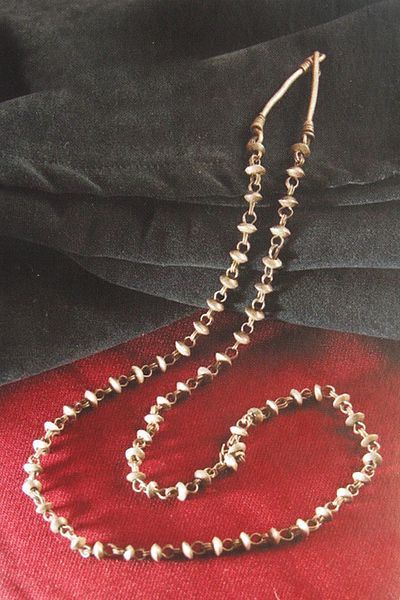
Culture and education are all present throughout the history of Pljevlja and its region. The Holy Trinity Monastery is the richest treasury of cultural and spiritual life of the Orthodox Serbs from the Middle Ages to the present times. The school in the Holy Trinity Monastery has been working continuously since the 16th century. In 1823, a primary school in Pljevlja started working. The school in Dovolja monastery worked since the 18th century. The significant date in the history of education in Pljevlja is the opening of the Pljevaljska Gymnasium in 1901., while The Heritage Museum Pljevlja is a treasure trove of the rich historical and cultural heritage of the city and region.
The Heritage Museum Pljevlja collection begins with works of prehistoric art from the 1st to the 4th centuries BC. This museum stands for one of the largest museums in Montenegro, and it was founded in 1952. Its holdings amount to over 5,000 items, of which only a small number are on permanent display, including the Pljevlja diatreta or cage cup.
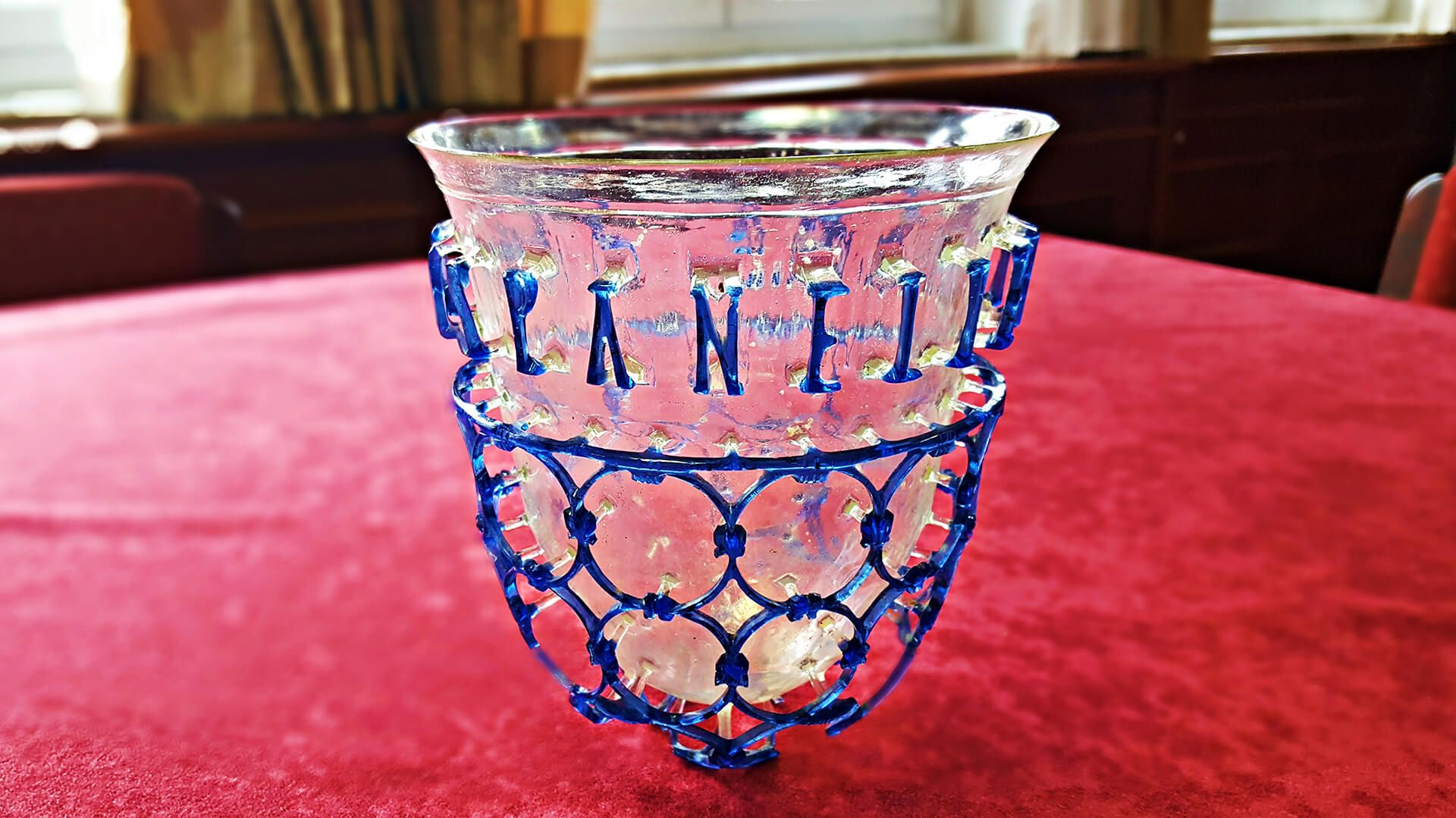
The Pljevlja diatreta is a well-preserved cage cup from the 4th century AD and it is made of transparent colourless glass with a cobalt blue web. The inscription, also in cobalt blue, reads "VIVAS PANELLENI BONA" (eng. "For good life of Panelleni"). It is said that the inscription is missing the letter M, so the full sentence should be "VIVAS PANELLENI BONAM". The cup is also a very rare example of a complete Roman cage cup , or diatretum and its roots lead back to a famous workshop in Cologne. The cup is not on display but can be looked at a scheduled appointment with the museum administration.
The Museum also holds, collects, processes and presents museum items from the area of Pljevlja. The holdings have been classified into several collections: archaeological, ethnographic, historical, numismatic and artistic.
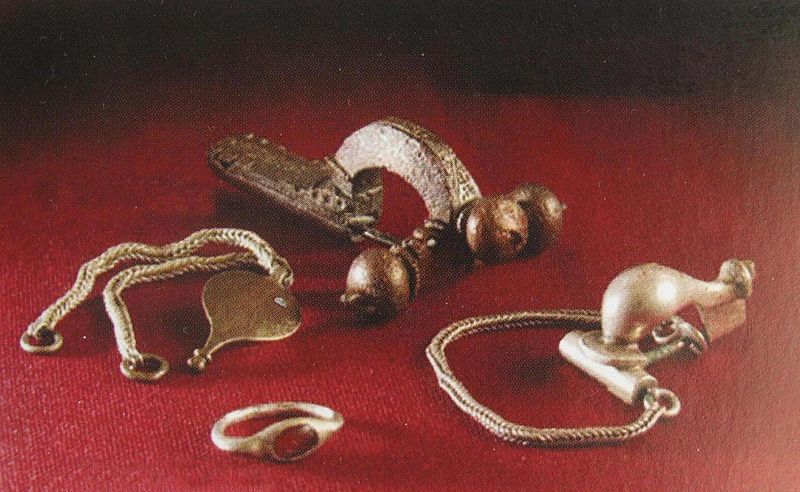
Valuable items from the archaeological collection illustrate the significance of archaeological sites in the area. The items found at the site of Medena stijena (rocks in the Ćehotina River Canyon) are of particular importance. The items found in this site belong to the cultures of early Palaeolithic, Mesolithic, Copper and Bronze Age. The stone tools from the oldest layers of Medena stijena show certain similarities with the excavations at Franchti Cave in Argolid Gulf in Greece. The items from Medena stijena and several more natural shelters in the Canyon of Ćehotina River prove that this area of Montenegro was intensively inhabited during late Pleistocene. There are also remnants of an ancient town known among scientists as the "Municipium S".
Based on the displayed epigraphic monuments, it may be presumed that this town existed in 150 BC. The monuments from this site are particularly interesting and significant for comprehending the development of the Roman art, here intermingled with the local, Illyrian-Celtic tradition.
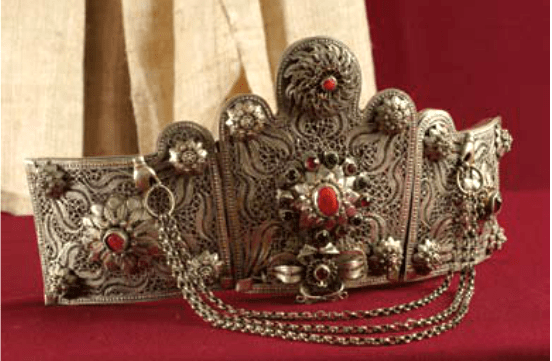
If you are interested in learning about Montenegrin history or want to find out more about city of Pljevlja, be sure to check out Facebook Page of Heritage Museum Pljevlja.
10 February 2019 - Deputy prime minister and agriculture minister Milutin Simović recently visited Kolašin and said that the famous leafy cheese from Kolašin (the name is derived from its specific texture – thin, almost transparent layers) is going to be the 6th Montenegrin protected product, which means it will get a brand new value and thus additional income for its producers.
Minister Simović said at the meeting with the representatives of the Association of Producers of this famous leafy cheese from Kolašin, who submitted the request for obtaining the official mark of origin, that is, protection of this product at the national level, to the Ministry of Agriculture and Rural Development.
The president of the Association, Milovan Vlahović, said this procedure started three years ago along with the project of the Employment Agency of Montenegro when it was decided to set up an association that would assist the local farmers.
“Then we decided to initiate the process of protecting the geographical origin and branding of the leafy cheese from Kolašin,” said Vlahović.
The process itself is in its final phase, i.e. there is one more month to be completed entirely, according to him.
The protection sign will mean a new step forward for Montenegro in the area of product quality policy, improvement of domestic producers, and creation of new jobs and more dynamic development of local and entire Montenegrin economy.
Montenegrin prosciutto is the most recent product that was approved under protection in Montenegro, taking place in December 2018.
“According to the Producer’s specification, Montenegrin prosciutto is the durable, dried meat product, processed from the ham of pig, dryly salted and coldly smoked and then it went through the process of drying. This entire process lasts at least one year. The application of the traditional production procedure, without any additions, other than sea salt, with the process of burning of the beech tree, results in the product that has recognizable smell, texture and taste”.
Before this, in the last two years, five products have been protected: “Njeguški pršut” (Prosciutto from Njeguši), “Pljevaljski sir” (Cheese from Pljevlja), “Cronogorski goveđi pršut” (Montenegrin beef prosciutto)“ and “Cronogorska stelja”.
The public call for the selection of agents for mediation when applying for Montenegrin citizenship through investments and agents for assessing the international eligibility of candidates has received more than 30 entries, it was said at the Secretariat for Development Projects.
The Secretariat announced the opening of applications for the next week that could be delivered from the beginning of January to February 1st. "The public opening of the applications will be conducted on the 11th and 12th of February for these two public invitations, after which the final list of applicants will be known. The decision on the election of the agents will be made after a detailed analysis of each application within the envisaged deadline, said the Secretariat.
According to the plan, the Secretariat's decision on the selection of agents should be made within one month from the date of the public opening of the applications and it will be published on the Secretariat's website. Upon the decision, the Government will conclude a contract with the selected agents, which will allow them to issue licenses and only on the basis of issued licenses, can agents perform their activities within the aforementioned program. If it is subsequently found that the person who acquired the Montenegrin citizenship by admission in accordance with the decision has given false information or deliberately conceals the facts and circumstances, as well as if the agent for assessing international eligibility for that person provided incorrect information in his report, a resolution on the loss of the citizenship will be issued. The Government’s decision on criteria, methods and procedures for election of persons who may obtain Montenegrin citizenship by admission for the realization of a special investment program of special importance for the economic interest of Montenegro is applicable from 1st January 2019. Based on this decision in the next three years, it is possible to issue a maximum of 2,000 Montenegrin passports.
The government's program for obtaining a Montenegrin passport is a donation and investment. The donation refers to the amount intended for the development of less developed municipalities. The donation amounts to 100,000 euros per applicant's entry, which is 200 million euros for 2,000 requests. The investment refers to the amount intended to invest in one of the development projects from the Government's list of development projects. The applicant has to pay at least EUR 450,000 for the purpose of investing in one of the development projects in Podgorica or at the coast or at least EUR 250,000 for the purpose of investing in one of the development projects in the northern or central region.
Text by Marija Mirjacic, on February 8th 2019, read more at Vijesti
The Association of Durmitor’s skorup (clotted cream) producers submitted a request to the Ministry of Rural Development and Tourism to register for the designation of origin, and the procedure is in the final phase.
HM "Durmitor" from Žabljak, the largest sheep farm in the Balkans and leading in the Association of producers of Durmitor skorup, says that by gaining the logo and the national emblem, a long-known food product will contribute to the promotion and recognition of the region from which it comes and will protect it from abuse and imitation.
"In addition, it will enable the increase of the market value of the product, increase consumer confidence, and most importantly the tradition will be preserved. Durmitor’s skorup is produced on a geographically clearly defined territory, which is the territory of three Durmitor municipalities, Zabljak, Pluzine and Savnik, occupying an area of 1,852 square kilometers, which makes 7.5% of the territory of Montenegro. This area is rich in plant species, plants of endemic and relic origin, floral flora, healing herbs, with large pasture lands and natural meadows where livestock are grown and nourished," says Dragana Obradovic from the company HM "Durmitor".
She estimated that by the registration of the origin, the Durmitor’s skorup would be a strong competitor on the domestic and foreign market, which would bring great benefits to the producers.
Durmitor’s skorup is produced with a traditional technology that is passed from generation to generation. The product has specific characteristics, taste, appearance and scent, and belongs to savory foods of high nutritional and energy value.
HM "Durmitor" counts about 1,000 milking sheep - autochthonous “pramenka”, during the summer, takes them to Dobri do, where they have facilities that meet all the legal requirements for the production of skorup. To make sure that skorup is prepared by the old recipe that is passed from generation to generation is liable the chief mountaineer Dragana Zeković.
"The milking of sheep is handled manually, and then we transfer the dishes with the milk to the dairy. Here the process of production, filtering, boiling and pouring of the milk are being carried out, as well as the process of making the cream (skorup). Then it is followed by the storage of skorup in wooden pots and salting. The process of its ripening is followed by transferring to “mjesine” to achieve additional ripening and obtain “skorup from mjesina” or 'old skorup'," reports Zekovic about the recipe for preparing Durmitor’s skorup and recalls on “saljevak”, “skorup” and “cheese-prljo” for which the Ministry has officially approved and acknowledged for their application of traditional methods in production.
Owner of "Ski" hotel Jovan-Rajo Baranin and his colleague from "Golden Pine" Radovan Bojović point out that they are satisfied that the well-known agricultural product from Durmitor will get a prestigious mark. They say that in the future in their hotels they will undoubtedly offer Durmitor’s skorup. Its logo and emblem will guarantee it, both to them as buyers and to the guests as well.
Text by Obrad Pjesivac, on February 10th 2019, read more at Vijesti
Skiing in Pljevlja, today a town without proper ski paths, has a long tradition, and the beginnings of the development of this sport are linked to before the Second World War.
The most credited was Josip Zic from Slovenia, who did not spare any efforts to show the citizens of Pljevlja, especially in the rural area, how to master the skiing technique.
The Belgrade press wrote about his skiing work. In 1940, published under the title "Skis as means of transport by the peasants in Sandzak," it was written that Zic in 1936 "first began to ski in this area".
He did not know how to ski himself when he first arrived from the coast of Istria to Pljevlja, ten years earlier.
Sure, the harsh winters in Pljevlja made him master the skill to ease fulfilling his daily activities.
In Crepoljski, Sarajevo, he completed a course for instructors, and at Kopaonik for a master teacher.
At that time, he also worked as a part-time gym teacher at the High school in Prijepolje.
Citizens of Pljevlja, especially in the rural area, considered him weird because of the hobby he started to pursue.
The man on the two boards, as they called him, for a very short time managed to make the skiing approachable even to the most sceptical ones.
This was also contributed by a story that rapidly spread in the villages of Pljevlja that Zic on the mountain Cemerno, on his return from Rudog, managed to escape the crowd of hungry wolves on his skis.
Knowing that the peasants showed interest in skiing, Zic began to visit the villages of Pljevlja. He even went to the farthest ones, several times. He showed his skis to the villagers, and how to use them as well.
After completing the lectures, Zic would take the drawings from the suitcase, hang them on the wall of the school where he held classes, showing various skiing techniques to his "students".
After several hours of theory, Zic would take the villagers to a nearby hill where he would show them the basics of skiing.
How much interest Zic aroused among the villagers it is shown by the fact that he was known for forming the so-called skiing troops in Crljenica, Mihajlovici, Jabuci, Krći, Gotovusa, Židovići, Čemerno, Crni vrh, Obarda and Hoćevini
"I'm lucky I learned how to ski. That good Slovenian brother Zic taught me and now I can almost compete with him. If I had factory skis I would beat him. Now I use skis when I go to the town to get salt or gas. It takes me a second to get it on my skis. When I need to lay the hay to the cattle, I go on my skis and I’m there in no time. For all this is good, but I have to say that it is best for the evening sessions. Earlier, I couldn’t go to another village. Now I just stand up on my skis and in a short time, I get there. I know that the wolves cannot catch me, and we peasants are not afraid of anything else," the author of the article published in the 1940s in Belgrade's "Stampa", quoting one of the villagers from Cemerno.
In Pljevlja, from 1936 to 1937, several skiing competitions were organized in the villages of Cemerno, Zidovici and Gotovusi. In addition to locals, the army also participated.
The most interesting was the "pure peasant games", which took place in 1936 in the village of Mihailovica.
The path on which adult skiers competed was 10 kilometers long, and half the size for the kids.
In the membership category, the first place was won by Hajro Suruliz, and in the category of generation Slobodan Novakovic from Potrlice.
It was also reported that young Marko Vasovic from that village also participated, who received the skis as a gift from the garrison officer from Pljevlja.
Unlike that time, in Pljevlja today there is no organized ski resort where current generations will learn this skill and spend time outside the polluted city environment.
They do not have a ski resort, but they have the best skier in the country
Two years ago, the local government announced the construction of a ski resort in the village of Mijailovica, near the road Pljevlja - Prijepolje, but nothing has yet been done nor has been mentioned as a project to be realized in this and next year. The project involved dismantling and overhauling of the pillars and ski lifts of the old ski resort in Kosanica and installation at a new location. The ski lift in the village of Kosanica was built in the early 80s and has not long been operational. Valuable equipment is decaying and partially threatened by thieves. At the beginning of 2002, near a monastery of the Holy Trinity, a mini ski lift of 120 meters was set up in the place called Popova njiva, but it has not long been operational either. The procurement was financed by the coal mine Pljevlja, which, as it was announced, allocated 30,000 marks, and the lift was handed over to the ski club “Ljubisnja”. Although they have no ski trails, numerous skiers have achieved remarkable results at competitions in the country and abroad. One of them is Eldar Salihovic, currently the best Montenegrin skier.
Text by Goran Malidzan, on February 10th 2019, read more at Vijesti
10 February 2019 - By launching the postage stamp dedicated to the 50th anniversary of the Mimosa Festival, the Montenegro Post honours the tradition of this exceptional festival, of Herceg Novi and the development of tourism in the city, it was announced at the presentation of the stamp. By creating a special postage stamp, Mimosa Festival is listed among the important events in the history of Montenegro, which have earned a valuable postage stamp.
"The Mimosa Festival, by which Herceg Novi is known and recognized, is in a way the tourist ambassador of Montenegro. Therefore, it really deserves to be presented with a postage stamp, "said Aleksandra Perović, head of the Philatelic and International Relations Department of the Post of Montenegro. She invited everyone to send a letter from Herceg Novi to their loved ones, and the letters will bring a flower of mimosa on the postage stamp.
The postage stamp, apart from its primary role, has an important promotional function because "the shipment and its stamp travel the world and carry the message of the country from which they come. The postage stamp represents a symbol of culture and remains in the legacy for generations," said PR manager of Post of Montenegro Vesna Goljević Novović. As she said, the theme for the stamp is always carefully chosen because it promotes the state of Montenegro.
Postage Stamps Dedicated to Jubilee Mimosa Festival are printed on a sheet of 20 stamps. It has a stylized mimosa flower and the mark of the Jubilee 50th anniversary of the festival. The colours that are dominant on the stamp are white, green and yellow. The nominal value is 0,50 EUR.
The ceremonial promotion of the postage stamp issue "50 Years of the Mimosa Festival" was held on February 8 at 12 pm in the Park Hall in Herceg Novi.
10 February 2019 - Lipa Cave, the first cave adventure in Montenegro offering a charming diversity of karstic features to provide visitors with a unique experience of the underground world, will open for visitors from April 1.
Located near Cetinje and visited by more than 20 thousand people per year, the cave will traditionally open its beautiful and wild system of 2.5 km of passages and halls for visitors in April.
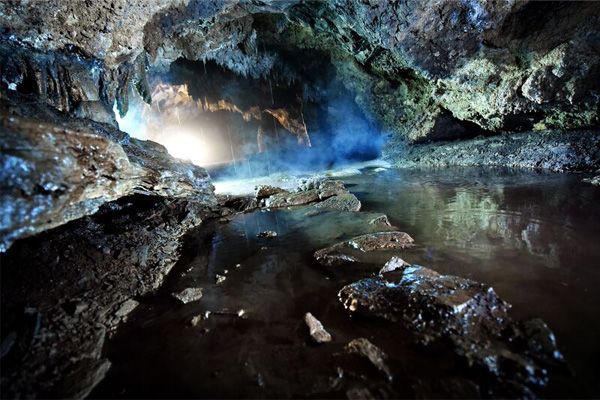
The representatives of the tourist company Lipa Cave recently stated for Mina-business News Agency that they were delighted with last year's season. "As each year we noted the growth in the number of visitors, so we expect this trend to continue in the future," said the company's PR.
"We invite all readers to be informed about further activities and news on our website www.lipa-cave.me and social networks," the company said.
Ticket prices will, as they say, remain the same as last year. The ticket price for adults is 10.9 EUR, for children up to five years 1 EUR, and for children from 5-15 years old 6.9 EUR. The family package costs 29.9 EUR and includes two adults and two or three children up to 15 years of age. The price includes parking, a train drive to the cave and back, a tour of the cave, a guide and insurance.
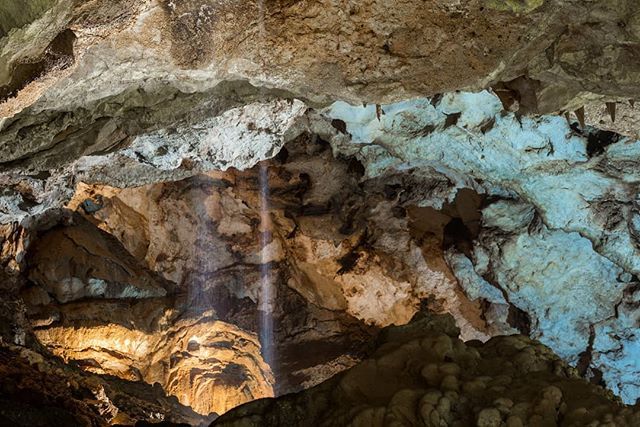
As explained by the tourist organisation Lipa Cave, the cave was open for tours since 2015. All visitors of the cave are accompanied by local guides who are kind, helpful, and well-trained. Cave tours are easily accessible as Lipa Cave is located only 33 km from Budva, 35 km from Podgorica, and 5 km from Cetinje. Its built-in trails and modern lighting make it even more attractive and perfectly safe. The cave is preserved in line with high environmental conservation standards. Only a year later from its opening websites like Montenegro Travel, Trip Advisor, as well as many others recommended Lipa Cave as one of the best places to visit in Montenegro. All the efforts of the TO are focused on providing an unforgettable cave adventure to the cave’s visitors, which has placed it on the list of the attractions you must see in Cetinje.






